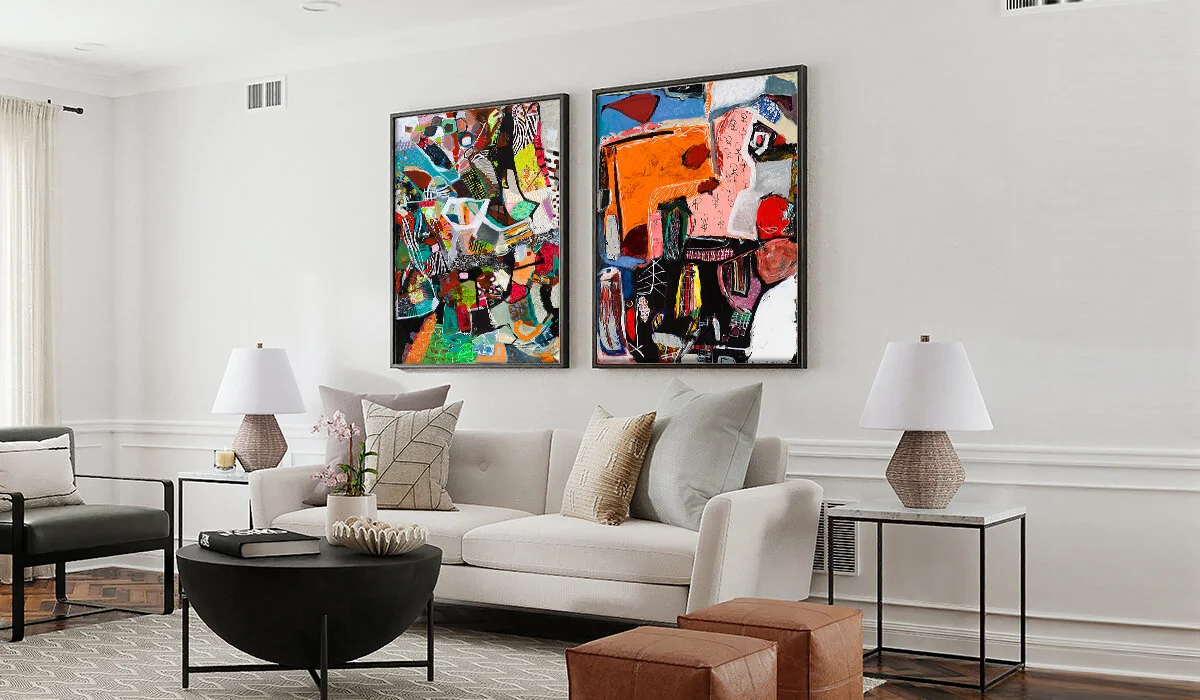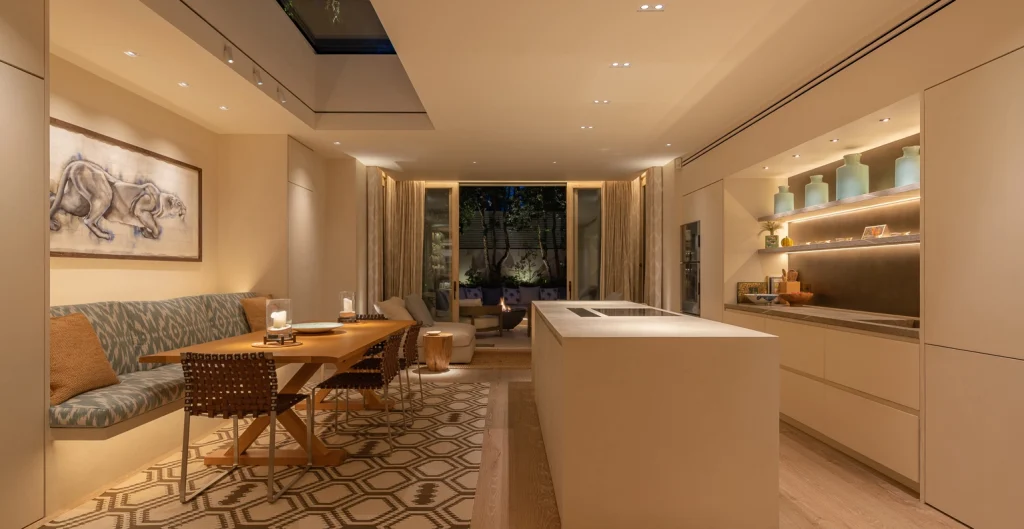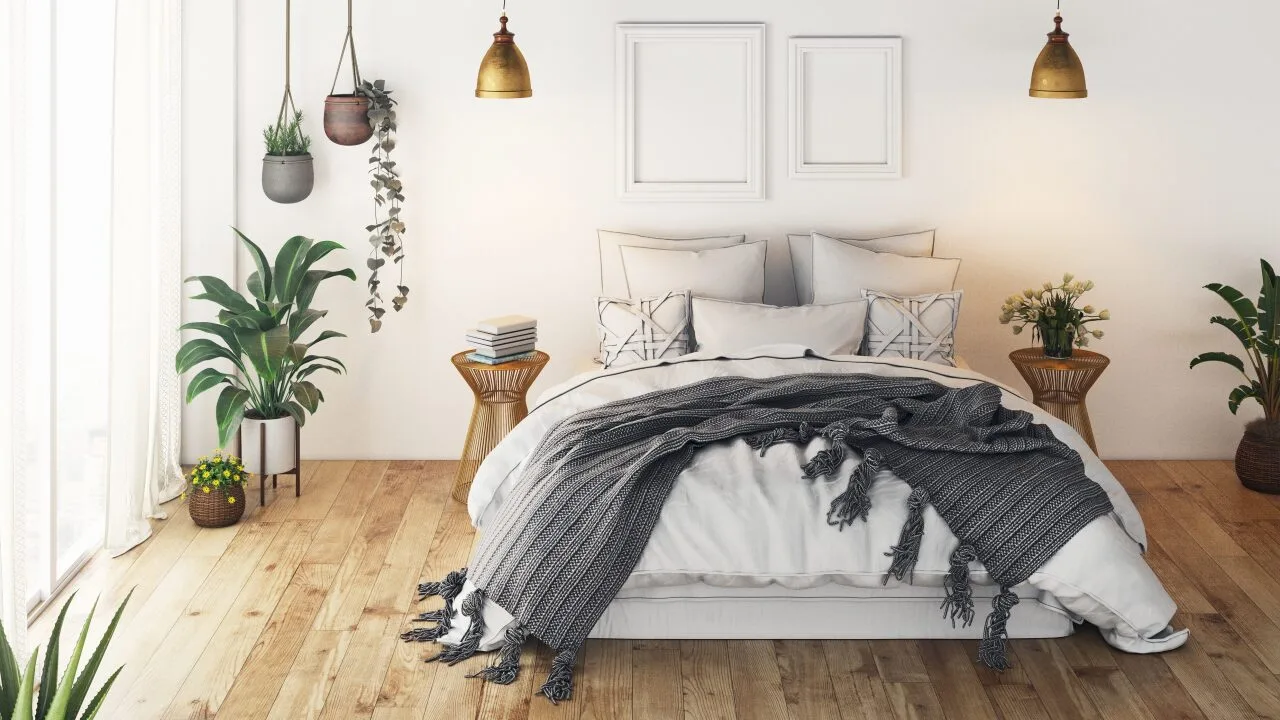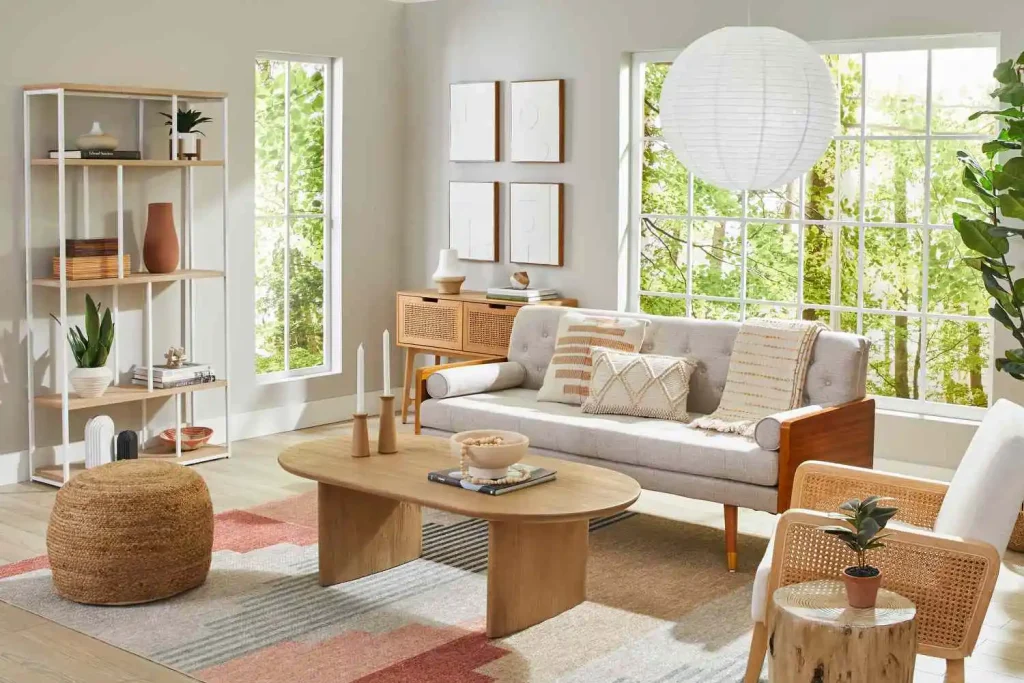How to Incorporate Art into Your Home: Beginner’s Guide
Art has the unique ability to transform spaces, evoke emotions, and reflect personal style. Incorporating art into your home can seem daunting, especially if you are new to art appreciation or interior design. This comprehensive guide will walk you through the process of selecting, displaying, and enjoying art in your home, helping you create a space that is both visually stunning and deeply personal.
1. Understanding the Importance of Art in Home Decor
The Role of Art in Interior Design
Art plays a crucial role in interior design by adding depth, texture, and personality to a space. It can:
- Set the Tone: Art can establish the mood of a room, whether it’s calm and serene, vibrant and energetic, or sophisticated and elegant.
- Create Focal Points: A striking piece of art can serve as a focal point, drawing the eye and anchoring a room’s design.
- Enhance Aesthetics: Art complements other design elements, such as furniture, color schemes, and architectural features, contributing to a cohesive look.
Personal Expression through Art
Art allows you to express your personality and taste. Your choice of artwork can reflect your:
- Interests and Hobbies: Pieces that depict subjects or themes you are passionate about.
- Cultural Background: Art that celebrates your heritage or cultural influences.
- Life Experiences: Art that resonates with your personal history or memories.
Enhancing Atmosphere and Mood
Art can significantly influence the atmosphere and mood of a room:
- Calming and Relaxing: Soft colors and serene scenes can create a tranquil environment.
- Energizing and Stimulating: Bold colors and dynamic compositions can add energy and vibrancy.
- Comforting and Welcoming: Warm tones and familiar subjects can make a space feel cozy and inviting.
2. Identifying Your Art Style
Exploring Different Art Styles
To identify your art style, explore various art styles and movements, such as:
- Abstract: Focuses on shapes, colors, and forms rather than realistic representations.
- Realism: Depicts subjects as they appear in real life with detailed accuracy.
- Impressionism: Captures the effects of light and color with loose brushwork and vibrant hues.
- Modernism: Emphasizes innovation and experimentation with form, technique, and materials.
- Contemporary: Reflects current trends and themes, often pushing traditional boundaries.
Finding Inspiration
Gather inspiration from various sources:
- Art Museums and Galleries: Visit local museums and galleries to see a wide range of artworks.
- Art Books and Magazines: Browse publications dedicated to art and design.
- Online Platforms: Explore websites like Pinterest, Instagram, and art-specific platforms to discover new artists and styles.
Defining Your Personal Aesthetic
Consider what resonates with you:
- Colors and Themes: Notice the colors and themes that attract you the most.
- Emotional Response: Pay attention to the emotional response certain pieces evoke.
- Harmonizing with Your Home: Think about how different styles and pieces will harmonize with your existing decor.
3. Choosing the Right Art Pieces
Original Art vs. Prints
Understand the difference between original art and prints:
- Original Art: Unique, one-of-a-kind pieces created by the artist. These are often more expensive but can be a worthwhile investment.
- Prints: Reproductions of original works. High-quality prints can be more affordable and accessible, allowing you to enjoy art without a significant financial commitment.
Affordable Art Options
Explore affordable ways to acquire art:
- Emerging Artists: Look for work by emerging artists who offer original art at lower prices.
- Art Fairs and Markets: Visit local art fairs and markets to find unique pieces at reasonable prices.
- Online Platforms: Websites like Etsy, Saatchi Art, and Society6 offer a wide range of affordable art options.
- DIY Art: Create your own art if you have a creative streak, adding a personal touch to your home.
Sourcing Art from Galleries, Online, and Local Artists
Consider different sources for acquiring art:
- Galleries: Visit local galleries to see and purchase art in person.
- Online Platforms: Use reputable online art platforms to browse and buy art from around the world.
- Local Artists: Support local artists by attending studio tours, open houses, and art events in your community.
4. Curating an Art Collection
Starting Small: Building Your Collection Over Time
Build your art collection gradually:
- Begin with a Few Key Pieces: Start with a few pieces that you truly love and build from there.
- Evolve Your Collection: As your taste and style evolve, add new pieces that reflect your changing preferences.
Mixing Different Art Forms and Mediums
Create a dynamic and diverse collection:
- Paintings: Include a variety of painting styles, from oil and acrylic to watercolor and mixed media.
- Sculptures: Add three-dimensional interest with sculptures and installations.
- Photography: Incorporate photographic art to capture moments and perspectives.
- Textiles: Consider textile art, such as tapestries and quilts, for texture and warmth.
Creating a Cohesive Collection
Ensure your collection feels cohesive:
- Color Palette: Choose a common color palette that ties different pieces together.
- Theme: Select art that fits a particular theme or subject matter.
- Style: Maintain a consistent style or period to create a unified look.
5. Selecting Art for Different Spaces
Living Room: Focal Points and Conversation Starters
The living room is often the center of activity in a home, making it an ideal place to showcase your art:
- Statement Pieces: Choose large, impactful pieces that draw attention and spark conversation.
- Gallery Walls: Create a gallery wall with a mix of art sizes and styles to add visual interest.
- Balance: Ensure your art complements the furniture and decor, balancing colors and styles.
Bedroom: Creating a Calming Retreat
Your bedroom should be a sanctuary, so select art that promotes relaxation and tranquility:
- Soft Colors: Choose pieces with soothing colors and gentle themes.
- Personal Touches: Incorporate art that holds personal significance, such as family photos or cherished prints.
- Symmetry: Hang art symmetrically above the bed for a balanced and harmonious look.
Kitchen and Dining Areas: Adding Character
Art in the kitchen and dining areas can add warmth and personality:
- Food and Drink Themes: Choose art that reflects culinary themes, such as still lifes of food and drink.
- Playful and Fun: Incorporate whimsical or colorful pieces to create a lively atmosphere.
- Functional Art: Consider functional art pieces like decorative plates or artisanal cutting boards.
Hallways and Entryways: First Impressions
These transitional spaces are perfect for creating impactful first impressions:
- Vertical Arrangements: Utilize vertical space with tall, narrow pieces or stacked art.
- Directional Flow: Guide the flow of traffic with art that leads the eye down the hallway.
- Mirrors and Art: Combine mirrors with art to enhance light and create the illusion of more space.
Home Office: Inspiring Creativity and Productivity
Your home office should inspire creativity and focus:
- Motivational Art: Choose pieces with inspiring quotes or uplifting imagery.
- Color and Energy: Incorporate art with vibrant colors to energize the space.
- Personal Interests: Display art that reflects your interests and passions to make the space uniquely yours.
Bathroom: Small Touches for Big Impact
Art in the bathroom can add a touch of elegance and personality:
- Water-Resistant Materials: Choose art made from materials that can withstand humidity, such as ceramic or metal.
- Small and Subtle: Opt for smaller pieces or prints that add charm without overwhelming the space.
- Spa-Like Vibes: Select serene and calming pieces to create a spa-like atmosphere.
6. Framing and Presentation
Choosing the Right Frame
Selecting the right frame is essential for enhancing the overall look of your art:
- Material: Choose from materials like wood, metal, or acrylic, depending on the style of the art and your decor.
- Color: Ensure the frame color complements the artwork and the room’s color scheme.
- Style: Match the frame style with the art style, whether it’s modern, traditional, or eclectic.
Matting and Mounting
Matting and mounting can enhance the presentation of your art:
- Matting: Use a mat board to create a border around the artwork, adding depth and highlighting the piece.
- Mounting: Secure the artwork to a backing board for stability and protection.
DIY Framing Tips
If you prefer a hands-on approach, consider these DIY framing tips:
- Standard Sizes: Purchase standard-sized frames to save money and simplify the process.
- Customizing: Customize store-bought frames with paint, stain, or embellishments to match your decor.
- Repurposing: Repurpose old frames by refinishing them to give them a new life.
7. Hanging and Arranging Art
Tools and Techniques for Hanging Art
Proper tools and techniques are crucial for securely hanging your art:
- Tools: Use a tape measure, level, hammer, and appropriate hanging hardware, such as picture hooks or wall anchors.
- Techniques: Measure and mark the wall, ensuring the artwork is level and securely fastened.
Creating a Gallery Wall
A gallery wall can be a stunning way to display a collection of art:
- Planning: Lay out the arrangement on the floor before hanging to visualize the final look.
- Spacing: Maintain consistent spacing between pieces for a cohesive appearance.
- Mixing Sizes: Mix different sizes and orientations to create visual interest.
Balancing Size, Color, and Style
Achieve balance by considering size, color, and style:
- Size: Vary the sizes of your artwork to create a dynamic and balanced display.
- Color: Use a consistent color palette or complementary colors to unify the collection.
- Style: Mix different styles thoughtfully to ensure they complement rather than clash.
8. Lighting Your Art
Importance of Proper Lighting
Proper lighting is essential for showcasing your art:
- Highlighting Details: Good lighting brings out the details and colors of the artwork.
- Creating Ambiance: Lighting can enhance the mood and atmosphere of the room.
Types of Art Lighting
Different types of lighting can enhance your art:
- Track Lighting: Adjustable track lights can be directed to highlight specific pieces.
- Picture Lights: Mounted above or below the artwork, picture lights provide focused illumination.
- Wall Washers: These lights cast a broad, even light across the wall, ideal for gallery walls.
Positioning Lights for Maximum Impact
Position lights strategically to maximize their impact:
- Angle: Position lights at a 30-degree angle to minimize glare and shadows.
- Distance: Ensure the light source is at an appropriate distance to evenly illuminate the artwork.
- Dimmers: Use dimmers to adjust the light intensity based on the time of day and desired ambiance.
9. Caring for Your Art
Cleaning and Maintenance
Regular cleaning and maintenance will keep your art looking its best:
- Dusting: Gently dust frames and surfaces with a soft cloth.
- Cleaning Glass: Use a glass cleaner and a microfiber cloth to clean glass frames.
- Professional Cleaning: For valuable or delicate pieces, consider professional cleaning and conservation services.
Protecting Art from Light and Humidity
Protect your art from damage caused by light and humidity:
- UV Protection: Use UV-protective glass or acrylic to prevent fading from sunlight exposure.
- Humidity Control: Maintain stable humidity levels to prevent warping, mold, and mildew.
Insurance and Documentation
Safeguard your art investment with insurance and proper documentation:
- Insurance: Insure valuable pieces to protect against theft, damage, or loss.
- Documentation: Keep records of purchase receipts, provenance, and photographs of your artwork for insurance and appraisal purposes.
10. Engaging with Your Art
Rotating Art for a Fresh Look
Keep your home’s decor dynamic by rotating your art:
- Seasonal Changes: Swap out artwork seasonally to reflect changing themes and moods.
- New Acquisitions: Rotate new pieces into your collection to keep your display fresh and exciting.
Hosting Art-Themed Gatherings
Share your passion for art by hosting art-themed gatherings:
- Art Tours: Invite friends and family for a tour of your art collection, sharing the stories behind each piece.
- Art Nights: Host art nights where guests can create their own art or discuss their favorite artists and styles.
Continuing Your Art Education
Deepen your appreciation and knowledge of art:
- Art Classes: Take art classes to learn more about different techniques and styles.
- Art Books and Magazines: Read books and magazines dedicated to art to stay informed about trends and new artists.
- Museum and Gallery Visits: Regularly visit museums and galleries to see new exhibitions and gain inspiration.
Conclusion
Incorporating art into your home is a deeply personal and rewarding endeavor. By understanding the importance of art in interior design, identifying your personal style, and thoughtfully selecting and displaying pieces, you can create a home that reflects your unique personality and aesthetic.
From choosing the right art for different spaces to framing, hanging, lighting, and caring for your collection, every step in the process contributes to creating a visually stunning and emotionally enriching environment. Embrace the journey of discovering and engaging with art, and enjoy the beauty and inspiration it brings to your home.



